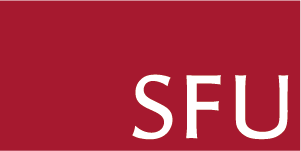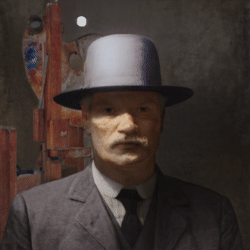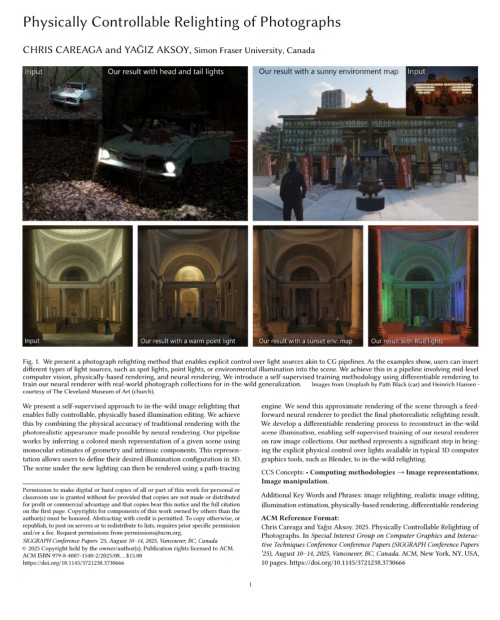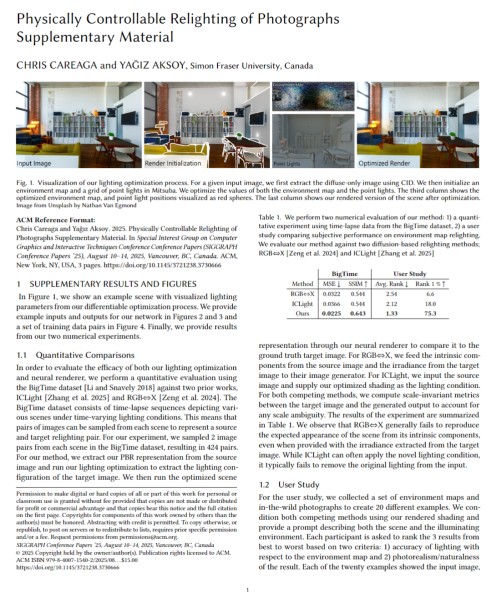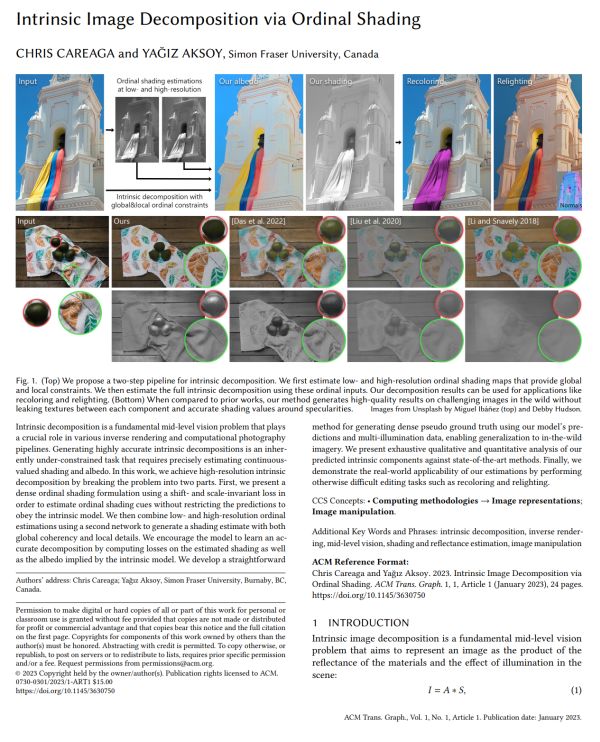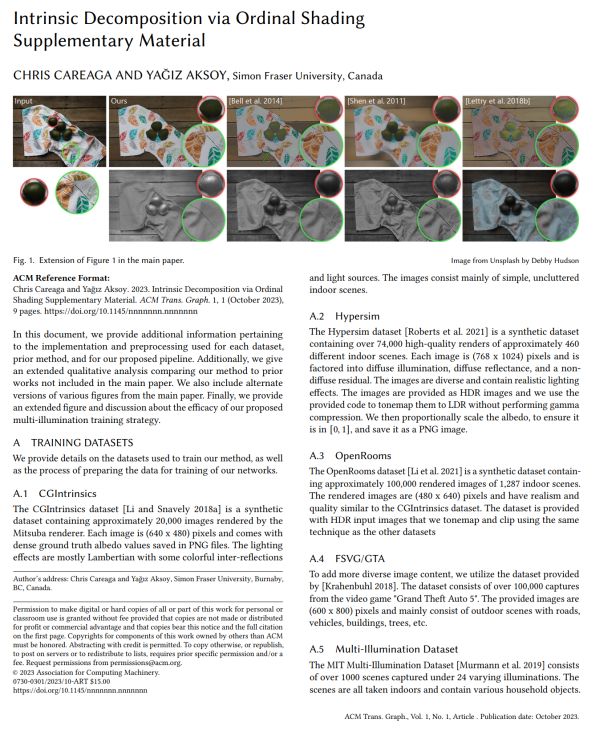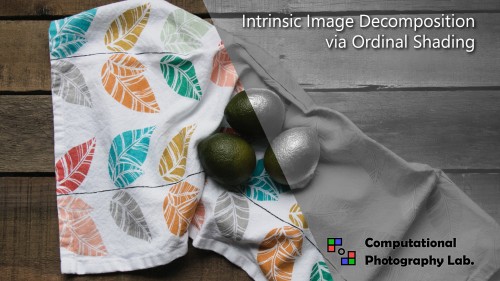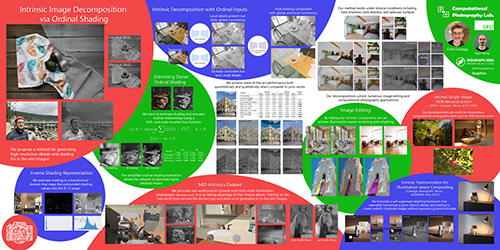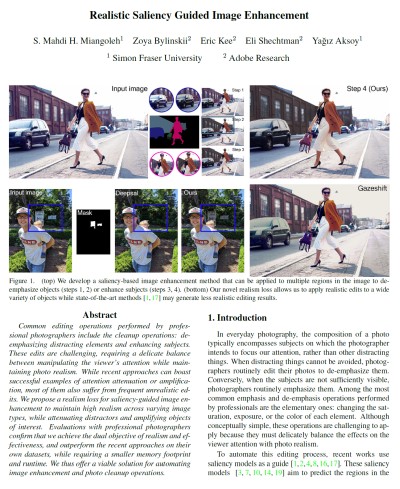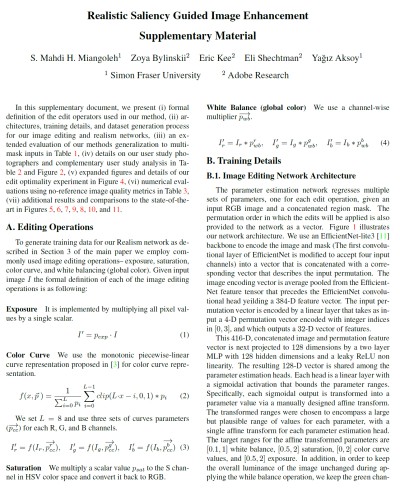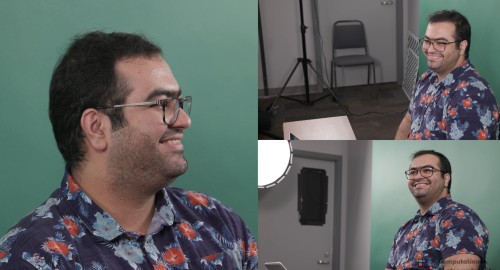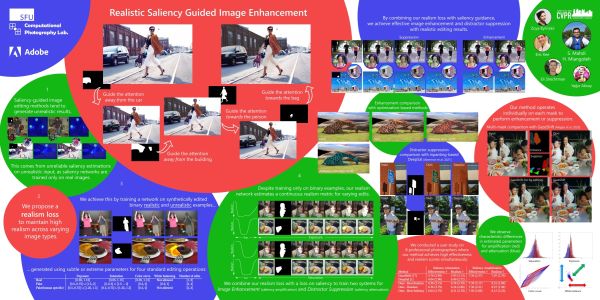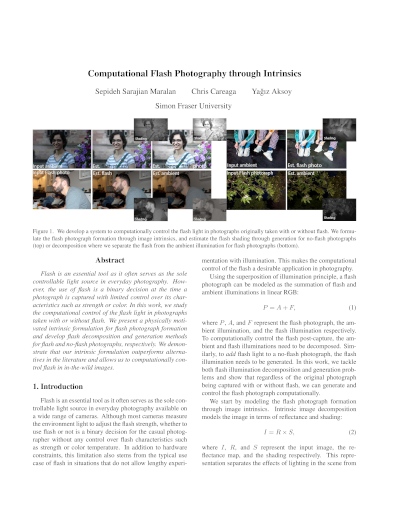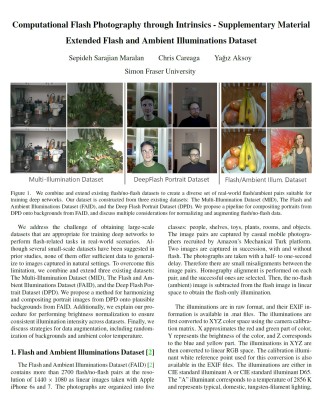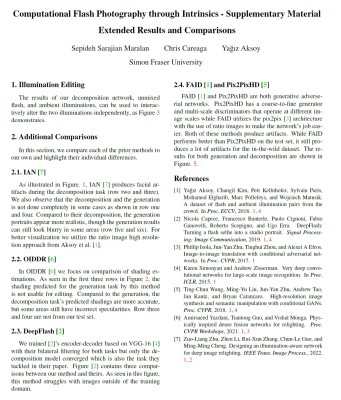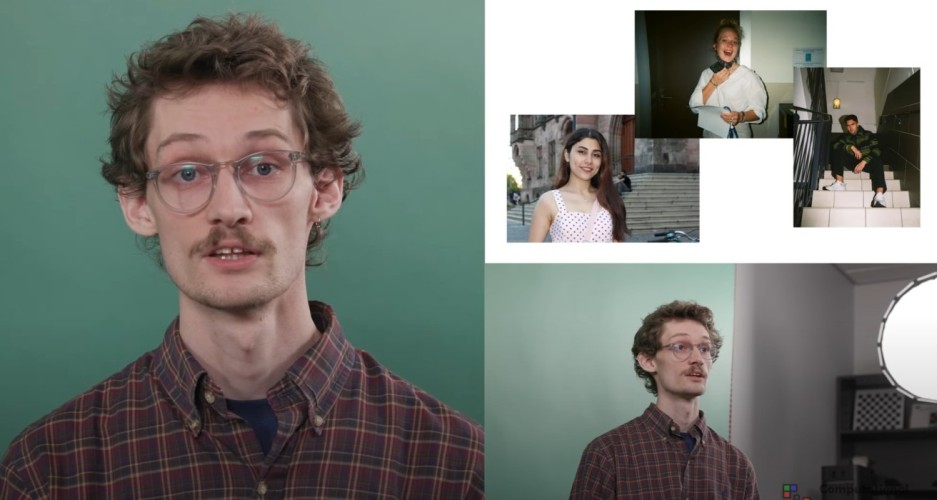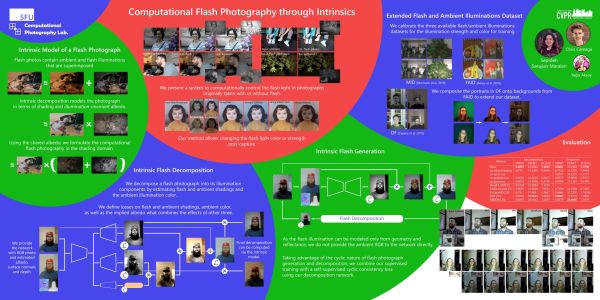Intrinsic Harmonization for Illumination-Aware Compositing
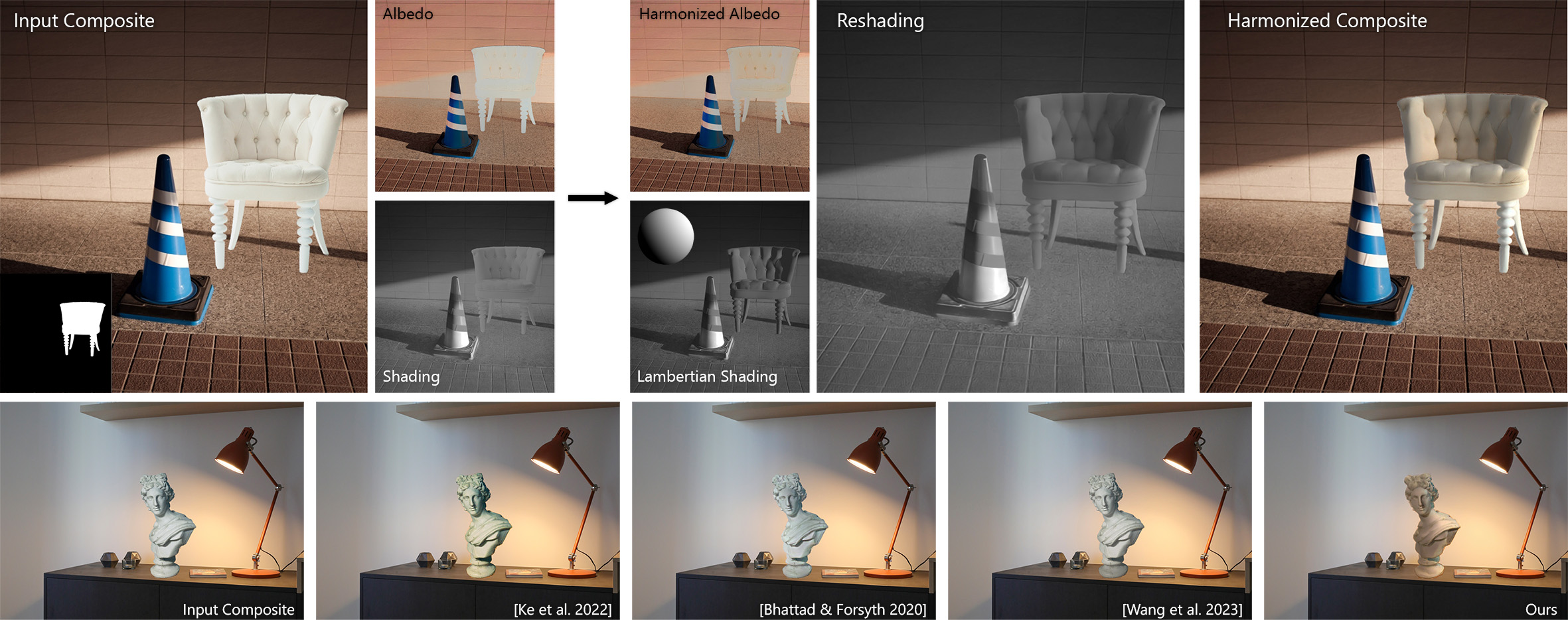
We propose an illumination-aware image harmonization approach for in-the-wild imagery. Our method is formulated in the intrinsic image domain. We use off-the-shelf networks to generate albedo, shading and surface normals for the input composite and background image. We first harmonize the albedo of the background and foreground by predicting image editing parameters. Using normals and shading we estimate a simple lighting model for the background illumination. With this lighting model, we render Lambertian shading for the foreground and refine it using a network trained on segmentation datasets via self-supervision. When compared to prior works we are the only method that is capable of modeling realistic lighting effects.
Abstract
Despite significant advancements in network-based image harmonization techniques, there still exists a domain disparity between typical training pairs and real-world composites encountered during inference. Most existing methods are trained to reverse global edits made on segmented image regions, which fail to accurately capture the lighting inconsistencies between the foreground and background found in composited images. In this work, we introduce a self-supervised illumination harmonization approach formulated in the intrinsic image domain. First, we estimate a simple global lighting model from mid-level vision representations to generate a rough shading for the foreground region. A network then refines this inferred shading to generate a harmonious re-shading that aligns with the background scene. In order to match the color appearance of the foreground and background, we utilize ideas from prior harmonization approaches to perform parameterized image edits in the albedo domain. To validate the effectiveness of our approach, we present results from challenging real-world composites and conduct a user study to objectively measure the enhanced realism achieved compared to state-of-the-art harmonization methods.
Implementation
Video
Paper
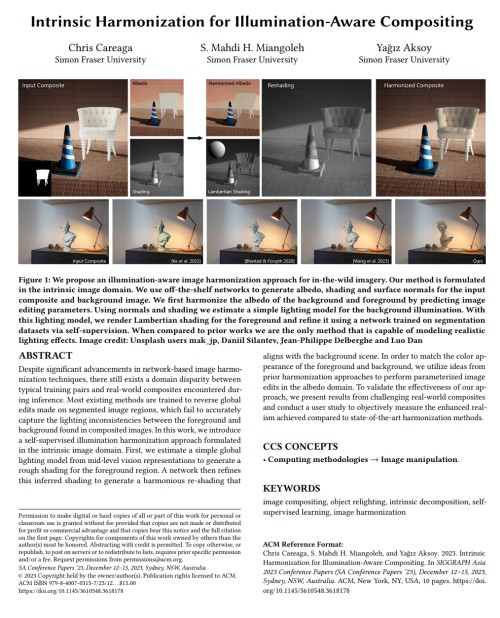 |
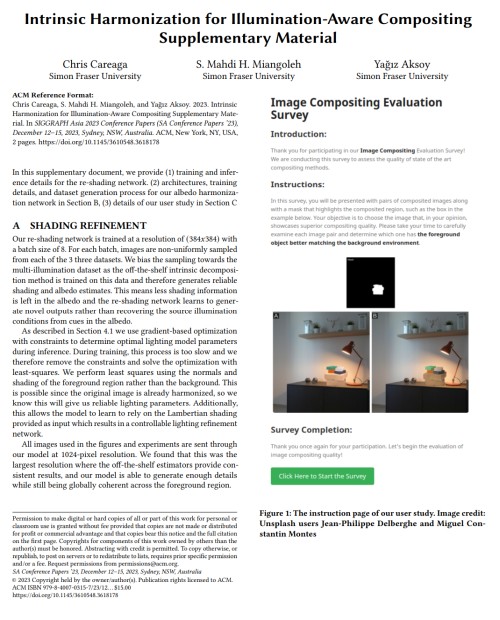 |
BibTeX
author={Chris Careaga and S. Mahdi H. Miangoleh and Ya\u{g}{\i}z Aksoy},
title={Intrinsic Harmonization for Illumination-Aware Compositing},
booktitle={Proc. SIGGRAPH Asia},
year={2023},
}
License
The methodology presented in this work is safeguarded under intellectual property protection. For inquiries regarding licensing opportunities, kindly reach out to SFU Technology Licensing Office <tlo_dir ατ sfu δøτ ca> and Dr. Yağız Aksoy <yagiz ατ sfu δøτ ca>.
Related Publications
